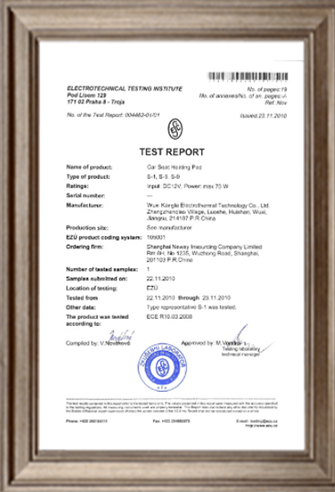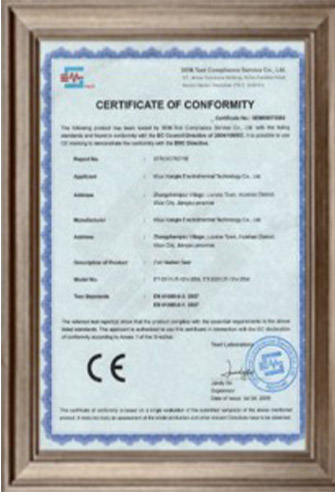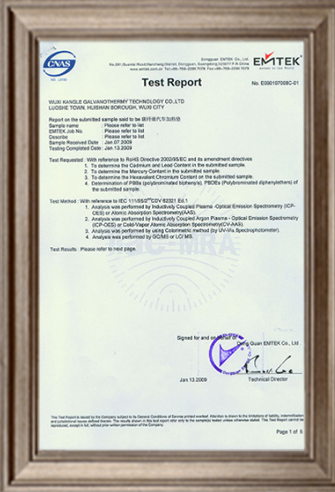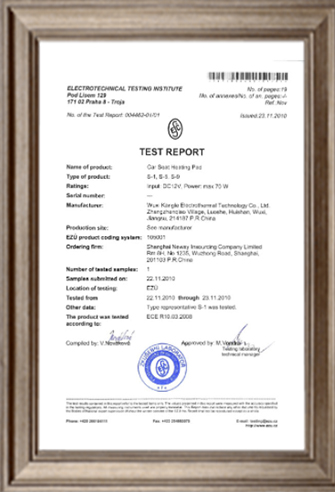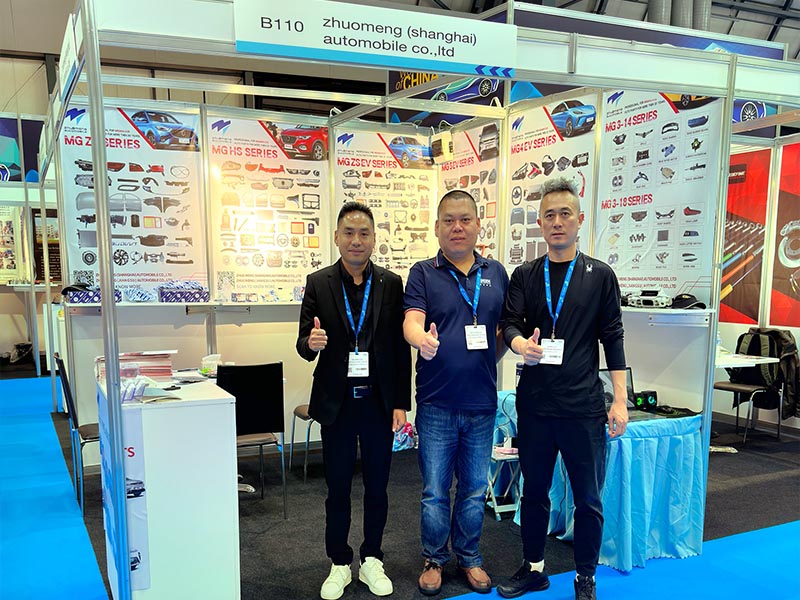What are the symptoms of a broken shock absorber?
01 Oil seepage
Oil seepage of shock absorber is an obvious symptom of its damage. The outside surface of the normal shock absorber should be dry and clean. Once oil is found to be leaking, especially in the upper part of the piston rod, this usually means that the hydraulic oil inside the shock absorber is leaking. This leakage is usually caused by wear of the oil seal. A slight oil leak may not immediately affect the use of the vehicle, but as the oil leak intensifies, it will not only affect the comfort of driving, but also may produce an abnormal noise of "Dong Dong dong". Due to the high hydraulic system inside the shock absorber, maintenance is a safety hazard, so once a leak is found, it is usually recommended to replace the shock absorber rather than try to repair it.
02 Shock absorber top seat abnormal sound
The abnormal sound of shock absorber top seat is an obvious symptom of shock absorber failure. When the vehicle is driving on a slightly uneven road surface, especially in the 40-60 yard speed range, the owner may hear a dull "knock, knock, knock" drum beating in the front engine compartment. This sound is not a metal tapping, but a manifestation of pressure relief inside the shock absorber, even if there are no obvious signs of oil leakage outside. With the increase of use time, this abnormal noise will gradually increase. In addition, if the shock absorber sounds abnormally on a bumpy road, it also means that the shock absorber may be damaged.
03 Steering wheel vibration
Steering wheel vibration is an obvious symptom of shock absorber damage. The shock absorber contains components such as piston seals and valves. When these parts wear, fluid may flow out of the valve or seal, resulting in unsteady fluid flow. This unstable flow is further transmitted to the steering wheel, causing it to vibrate. This vibration becomes more pronounced especially when passing through potholes, rocky terrain or bumpy roads. Therefore, the strong vibration of the steering wheel may be an alarm warning of oil leakage or wear of the shock absorber.
04 Uneven tire wear
Uneven tire wear is an obvious symptom of shock absorber damage. When there is a problem with the shock absorber, the wheel will vibrate unsmoothly while driving, causing the wheel to roll. This roll phenomenon makes the contact part of the tire with the ground wear seriously, and the uncontacted part is not affected. Over time, the wear shape of the tire will become uneven, which not only affects the driving stability of the vehicle, but also may increase the sense of turbulence when driving. When the car passes over bumpy roads or speed bumps, the wheels may make abnormal noises, which is also a warning that the shock absorber has failed.
05 Loose chassis
A loose chassis is an obvious symptom of a damaged shock absorber. When the vehicle is driving on a bumpy road, if the body attitude is too bumpy and wobbly, it usually means that the shock absorber has a problem or damage. The main function of the shock absorber is to absorb and reduce the shock and vibration caused by the uneven road surface during driving, and when it is damaged, the vehicle will not be able to effectively maintain a stable body attitude, resulting in the chassis feeling loose.
What if the shock absorber does not spring back when pressed?
When the shock absorber fails to bounce back after being depressed, four things can happen. The first case is that the oil leak or the use of a long time, the internal resistance of the ambassador shock bar can not effectively rebound, resulting in the inability to effectively filter the spring aftershock, although it will not affect the safety of driving, but will affect the comfort. It is recommended that the shock absorber be replaced in pairs and that four-wheel positioning be performed after replacement. The second case is that there is a problem with the shock absorber itself, such as leaking oil or having old traces of oil leakage. If the shock absorber does not leak oil, it is necessary to check whether the connection pins, connecting rods, connecting holes, rubber bushings, etc., are in good condition. Damaged, unsoldered, cracked or detached shock absorbers can also result in failure to bounce back. The third case is the failure of the internal parts of the shock absorber, such as the coordination gap between the piston and the cylinder is too large, the cylinder tensioning is poor, the valve seal is poor, the valve plate and the valve seat are tight, and the tension spring of the shock absorber is too soft or broken. Repairs need to be made depending on the situation, such as by grinding or replacing parts. Finally, during the use of the car, the working state of the shock absorber has a direct impact on the driving stability and the service life of other parts, so the shock absorber should always be kept in good working condition.
The rebound problem of shock absorbers can be caused by many reasons. First, the shock absorber may not bounce back effectively due to long use time or oil leakage. This situation will not have an impact on driving safety, but will affect comfort. Therefore, it is recommended to replace both shock absorbers at the same time, and to perform four-wheel positioning after replacement. Second, the shock absorber may have oil leaks or old traces of oil leaks. If the shock absorber does not leak oil, it is necessary to check whether the connection pins, connecting rods, connecting holes, rubber bushings, etc., are in good condition. Damaged, unwelded, cracked or detached shock absorbers may also result in failure to bounce back. If the above check is normal, it is necessary to further decompose the shock absorber to check whether the matching gap between the piston and the cylinder is too large, whether the cylinder is tensioned, whether the valve seal is good, whether the valve plate is tight with the valve seat, and whether the tension spring of the shock absorber is too soft or broken. Depending on the situation, grinding or replacement of parts is required. Finally, the working state of the shock absorber has a direct impact on the driving stability of the car and the service life of other parts, so the shock absorber should always be kept in good working condition.
There are four possible scenarios in which shock absorbers fail to bounce back. The first case is that the oil leak or the use of a long time, the internal resistance of the ambassador can not effectively rebound, will not affect the safety of driving, but will affect the comfort. It is recommended that the shock absorber be replaced in pairs and that four-wheel positioning be performed after replacement. The second case is that there is a problem with the shock absorber itself, such as leaking oil or having old traces of oil leakage. If the shock absorber does not leak oil, it is necessary to check whether the connection pins, connecting rods, connecting holes, rubber bushings, etc., are in good condition. Damaged, unsoldered, cracked or detached shock absorbers can also result in failure to bounce back. The third case is the failure of the internal parts of the shock absorber, such as the coordination gap between the piston and the cylinder is too large, the cylinder tensioning is poor, the valve seal is poor, the valve plate and the valve seat are tight, and the tension spring of the shock absorber is too soft or broken. Repairs need to be made depending on the situation, such as by grinding or replacing parts. Finally, during the use of the car, the working state of the shock absorber has a direct impact on the driving stability and the service life of other parts, so the shock absorber should always be kept in good working condition.
When the shock absorber fails to bounce back after being depressed, four things can happen. The first case is that the oil leak or the use of a long time, the internal resistance of the ambassador shock bar can not effectively rebound, resulting in the inability to effectively filter the spring aftershock, although it will not affect the safety of driving, but will affect the comfort. It is recommended that the shock absorber be replaced in pairs and that four-wheel positioning be performed after replacement. The second case is that there is a problem with the shock absorber itself, such as leaking oil or having old traces of oil leakage. If the shock absorber does not leak oil, it is necessary to check whether the connection pins, connecting rods, connecting holes, rubber bushings, etc., are in good condition. Damaged, unsoldered, cracked or detached shock absorbers can also result in failure to bounce back. The third case is the failure of the internal parts of the shock absorber, such as the coordination gap between the piston and the cylinder is too large, the cylinder tensioning is poor, the valve seal is poor, the valve plate and the valve seat are tight, and the tension spring of the shock absorber is too soft or broken. Repairs need to be made depending on the situation, such as by grinding or replacing parts. Finally, the working state of the shock absorber has a direct impact on the driving stability of the car and the service life of other parts, so the shock absorber should always be kept in good working condition.
There are four possible scenarios in which shock absorbers fail to bounce back. The first case is that the oil leak or the use of a long time, the internal resistance of the ambassador can not effectively rebound, will not affect the safety of driving, but will affect the comfort. It is recommended that the shock absorber be replaced in pairs and that four-wheel positioning be performed after replacement. The second case is that there is a problem with the shock absorber itself, such as leaking oil or having old traces of oil leakage. If the shock absorber does not leak oil, it is necessary to check whether the connection pins, connecting rods, connecting holes, rubber bushings, etc., are in good condition. Damaged, unsoldered, cracked or detached shock absorbers can also result in failure to bounce back. The third case is the failure of the internal parts of the shock absorber, such as the coordination gap between the piston and the cylinder is too large, the cylinder tensioning is poor, the valve seal is poor, the valve plate and the valve seat are tight, and the tension spring of the shock absorber is too soft or broken. Repairs need to be made depending on the situation, such as by grinding or replacing parts. Finally, during the use of the car, the working state of the shock absorber has a direct impact on the driving stability and the service life of other parts, so the shock absorber should always be kept in good working condition.
There are four cases in which the shock absorber cannot bounce back after being pushed down: 1. Oil leakage or long use time, internal resistance, the shock bar cannot effectively bounce back, will not provide effective reverse resistance to the spring aftershock, resulting in the inability to effectively filter the spring aftershock, no driving danger, but will affect comfort. It is recommended that the shock absorber be replaced in pairs and that four-wheel positioning be performed after replacement. 2. After confirming that the shock absorber has problems or faults, check whether the shock absorber leaks oil or has old traces of oil leakage. If the shock absorber does not leak oil, it is necessary to check whether the connection pins, connecting rods, connecting holes, rubber bushings, etc., are in good condition. Damaged, unsoldered, cracked or detached shock absorbers can also result in failure to bounce back. 3. If the above checks are normal, the shock absorber should be further disassembled. Check whether the matching gap between the piston and the cylinder is too large, whether the cylinder is tensioned, whether the valve seal is good, whether the valve plate is tight with the valve seat, and whether the tensile spring of the shock absorber is too soft or broken. Repair by grinding or replacing parts, depending on the situation. 4. During the use of the car, whether the shock absorber works well will directly affect the driving stability of the car and the service life of other parts. Therefore, the shock absorber should always be in good working condition.
If you want to know more, keep reading the other articles on this site!
Please call us if you need such products.
Zhuo Meng Shanghai Auto Co., Ltd. is committed to selling MG&MAUXS auto parts welcome to buy.


